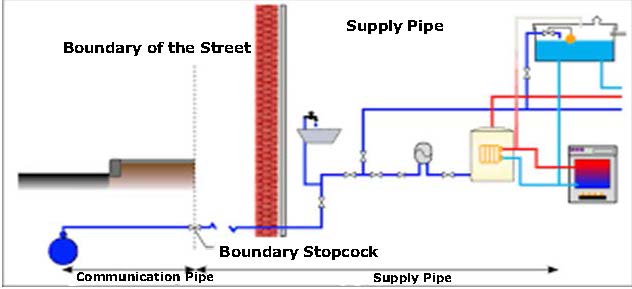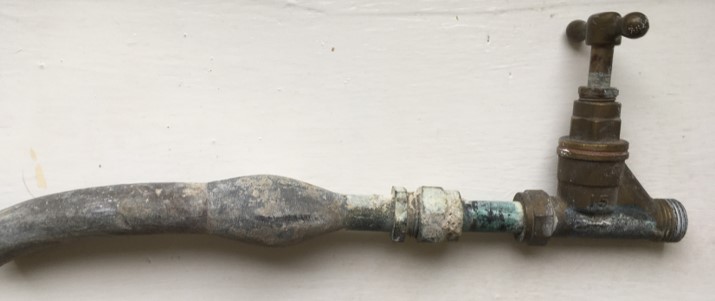Lead in Drinking Water
Where does lead come from?
Lead used to be common in the environment due to its widespread historic use in petrol, paint and water pipes. Before 1970, lead pipework was commonly used to connect properties to the mains water network. The use of lead pipes has since been banned, however many older properties that have not been modernised are likely to have lead pipework underground and/or inside the building.
Occasionally lead occurs naturally in groundwater however, this is a rare situation in the UK and lead is not present in the water within our wider public water supply network.
Is lead harmful?
Lead can build up in the body and it is recommended that exposure to lead minimised as far as possible. Those at particular risk are infants (including unborn babies) and children because lead can have an adverse impact on mental development. Lead may also be factor in behavioural problems. In adults it may impair kidney, heart and circulatory health.
How do I know if there are lead pipes in my home?
If your home was built:
- before 1970 – it may have lead pipes
- after 1970 – it is unlikely to have lead pipes
If you are unsure, you can make a simple check:
Find your internal stop tap, where the water first comes into the property. This may be in or behind the cupboards in your kitchen or a downstairs toilet. Unpainted lead pipes appear dull grey and often have a swollen joint next to the tap. The metal is soft and, if gently scraped with a coin, you will see the shiny, silver-coloured metal beneath. Wear disposable gloves while you do this and be careful not to breathe in any dust.
Other pipe materials in common use are:
- copper – bright, hard and dull brown
- iron – dark, very hard and may be rusty
- plastic – typically blue but if older it may be grey or black.
How does lead get into drinking water?
Lead from pipework can dissolve into the water whilst it stands in the pipe. Therefore, if you have lead pipework, the chances are there will be some lead in your drinking water. The concentration of lead may depend on the following:
- How long the water has been standing in the pipe
- The condition of the lead pipework
- The temperature of the water; more lead will dissolve during the summer and autumn months
- Water hardness; harder water tends to form a protective scale over the surface of the pipe which can reduce the concentration of lead in the water.
Where a risk of lead exists, water companies treat the water with orthophosphate to reduce the problem significantly. None the less, particles of lead may build up in these older pipes and intermittently appear in tap water.
A less common cause of lead in drinking water is the illegal use of lead-based solder to join sections of copper pipe. Lead solder is still permitted for use in closed central heating systems and mistakes occasionally happen whereby unqualified plumbers or householders use lead solder on drinking water pipes. Older brass fittings can also be a source of lead.
Disturbing or working on lead pipes can cause the concentration of lead in drinking water to temporarily increase. Flush the tap well for at least 10 minutes after carrying out any work on a lead pipe.
For all these reasons, lead in drinking water at a particular property may be present and if so, actions should be taken to reduce this as far as possible.
How do I reduce lead levels in my drinking water?
For drinking and cooking, run the tap to clear any water that has been standing in the pipework for while, for example, overnight. A washing up bowl full is normally enough to clear the pipe of standing water, although if you have long service pipe you may need to run the tap for longer. Check to see if you notice the temperature of the water drop as the mains water comes through (run the tap over your fingers and you should notice the change of temperature as fresh mains water arrives). You can then use the kitchen tap as normal.
This short-term measure will protect you and your family, but if there are lead pipes or another source of lead present, these should be replaced as soon as possible.
How can I find out if there is lead in my drinking water?
If you suspect that your home has lead pipes you can ask your water company to test the water at your kitchen tap. If the water company investigates and finds lead pipes or another source of lead in the plumbing system, they should provide you with written advice on what to do.
Who is responsible for the pipework?
The part of the service pipe that links the water main in the street to the stop valve outside your property belongs to the water company. This is known as the communication pipe, see the diagram below.
The part of the service pipe leading from the stop valve outside your property to the point where it enters your home is the responsibility of the owner. This is known as the private or supply pipe.
All the plumbing inside your home to the kitchen tap is the responsibility of the property owner.

Diagram 1 showing boundary between communication and supply pipes.
Replacing Lead Pipework
If you are planning on replacing your pipework, we recommend that you employ a qualified plumber to carry out any plumbing work, for example one who is accredited through the WaterSafe scheme. Refer to the WaterSafe website and see also our Advice Leaflet for finding a plumber.
When arranging this you should also notify your water company because they are legally required to replace their communication pipe, if it is made of lead and is at risk of contributing to the amount of lead in the drinking water supply.
I am buying a property
Ask your surveyor to check the nature and condition of the outside and internal pipes as part of the survey, making special mention of lead. Purchasers increasingly make the cost of removing lead pipes part of their negotiations with vendors as to sale price.
Diagram 2 A lead pipe showing a swollen ‘lead wipe’ joint.

